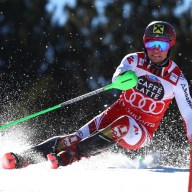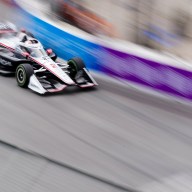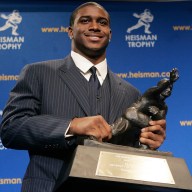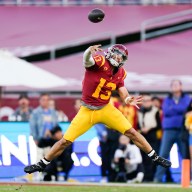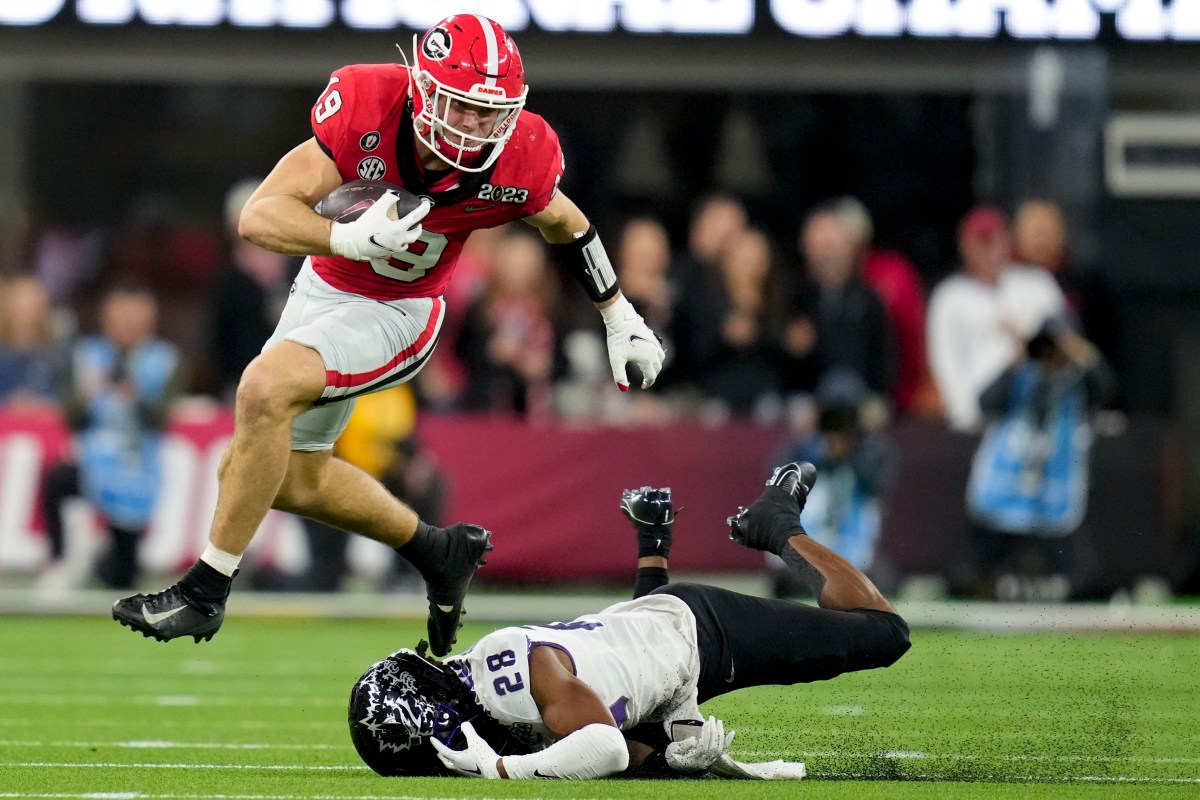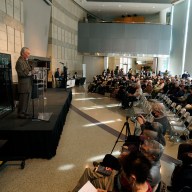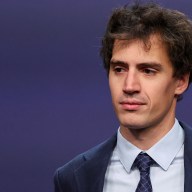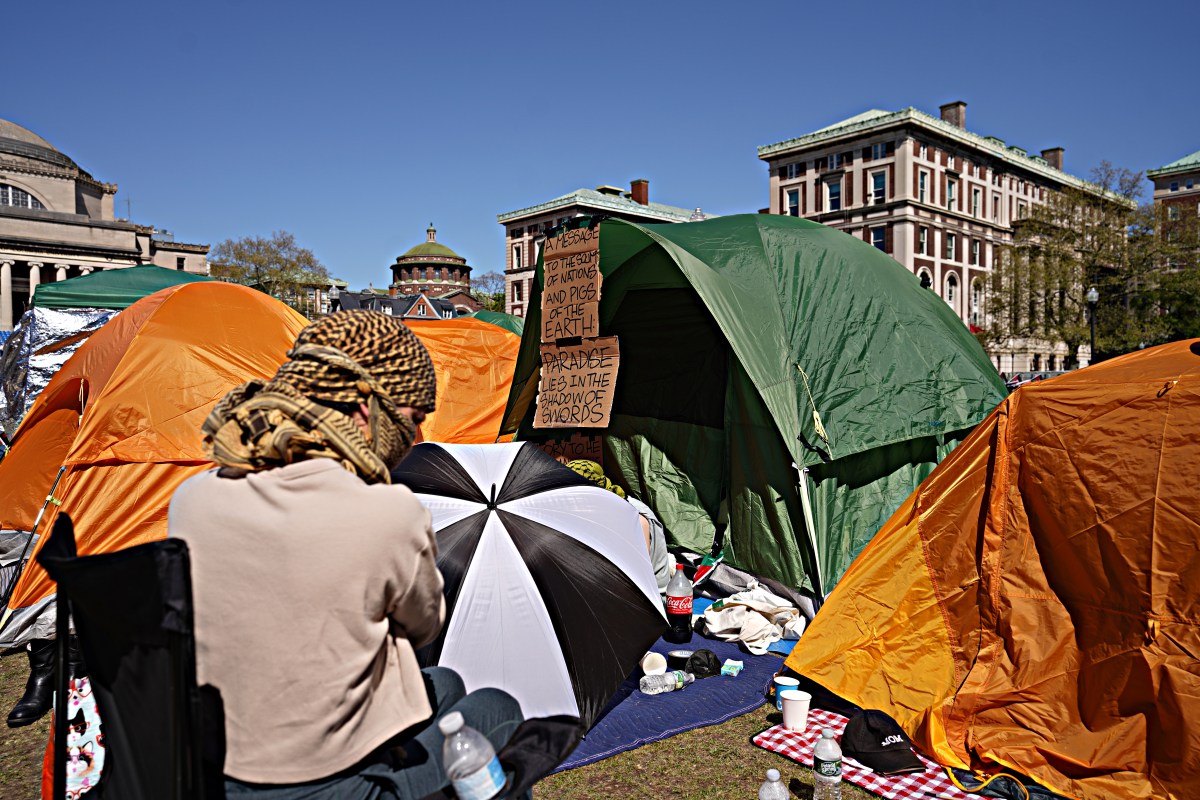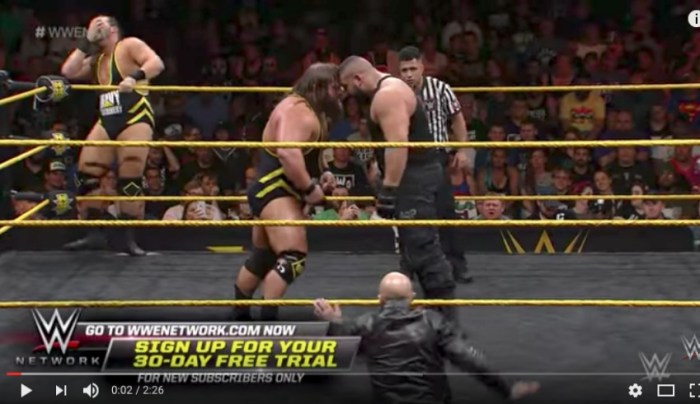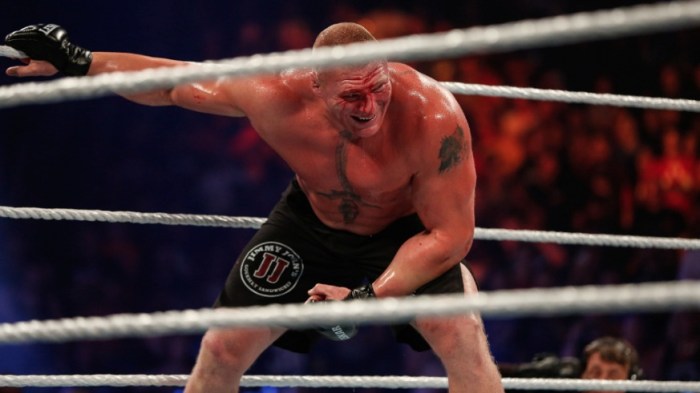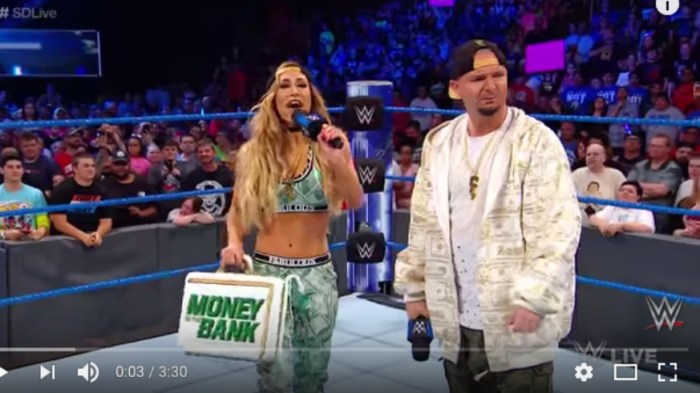If there’s one objective that the WWE has in particular for Extreme Rules, it’s to be safe. In past generations, we were a bloodthirsty people. In some capacity, we certainly still are. But in a time where we see the repercussions of concussions and the glaring wear and tear of some of pro wrestling’s most beloved personas, we must take certain precautions. And it’s not just pro wrestling. This is a reality many other sports must face. New rules that apply to the NFL based on all of the concussion research are shaping a different game for their respective sport, and we live in a time where we must sacrifice entertainment for the well being of the talent. That’s why it’s difficult for me to take the term “Extreme” without a grain of salt. Even if Shane jumped off the cell at WrestleMania, the extreme culture is not something that was able to sustain itself. This is why the supposed Hardcore bout between Lesnar and Ambrose was a bit disappointing. As something that was hyped so much to be a grueling bloodbath, it was fairly tame. I don’t expect much more from the Asylum match at Extreme Rules. It must be hard for Dean Ambrose to be the “Extreme” guy in WWE during the PG era. Even if the culture is shifting back toward a more realistic, mature product, a guy like Ambrose is limited in an environment restricted by legalities. At every effort to draw blood, the replay will be shown in black and white, and any potential chair shot to the head will be redirected to the lower back, for safety’s sake. And yet, this is the same linear reality in which ECW was able to thrive, for at least the better part of a decade. Yes, the adopted term “Extreme” was born from Paul Heyman’s Extreme Championship Wrestling, which may have been completely foreign to younger fans if not for the WWE Network. Much like the current “New Era” in WWE, ECW was a reaction to the stale mainstream product. It was the punk rock counter-culture of pro wrestling and it’s influence still resonates to this day. What “Extreme” meant back in the 90s was taking pain, content, and athleticism to its limits. Between Tommy Dreamer begging The Sandman for another Singapore Cane strike; the gripping promos of Cactus Jack; and awe inspiring competitions between Jerry Lynn, Tajiri, and Super Crazy; ECW had a loyal, undying fan base who believed in an idea. But it was an idea based in sacrifice. They sacrificed their bodies, minds, and anything resembling financial stability in an attempt to change the face of pro wrestling. They wore their passion on their barbed-wire torn sleeves and brought about a revolution that made the major players, WWF and WCW, take notice. ECW was the most successful third party candidate since Ross Perot. To Vince McMahon’s credit, he gave the ECW talent a stage on Monday Night Raw to showcase their brutal new brand. And for years later, Paul Heyman secretly received paychecks from WWF as a symbol of loyalty, and to hopefully cultivate some talent. Arguably, the biggest superstar to come out of ECW was Rob Van Dam, but guys like Chris Jericho, Eddie Guerrero, Chris Benoit, Dean Malenko, Rey Mysterio, and Stone Cold Steve Austin came through the small Philadelphia promotion. It’s hard to say if those stars would have ever made their names in the United States had it not been for Heyman’s eye for global talent. Around the time when WCW was finally sold to Vince McMahon, ECW was also unable to stay afloat. Both organizations assimilated into the WWE and merged as The Alliance. Now, WCW and ECW were notorious rivals, and the storyline of them joining forces was as unbelievable as it was unsuccessful. And so began the slow dilution of the ECW brand. ECW wrestlers found some success in WWE in the early 2000s, but much of what was “Extreme” in WWE was already there. The Dudley Boyz and Mick Foley among others had already brought the style to WWE, and the company had created their own version of hardcore with the shocking stunts of guys like Jeff Hardy in TLC matches. Around this time, there was a series of wrestler deaths which had a very negative impact on the perception of pro wrestling. And rightfully so. There was very little precaution taken for the well being of old wrestlers. Drug abuse and near impossible schedules drove performers to physical and mental destruction. Of course, this was before the sports world knew much at all about concussions. Prior to Tough Enough and WWE star, Chris Nowinski’s, research and work with head trauma, wrestlers were just told to fight through the pain and confusion, and finish the match. Suck it up. Super glue your open wounds shut like Sabu. It was an old school, time honored tradition. Finishing the match after suffering even a major injury like a broken neck (see: Steve Austin, Taz, etc.) was proof of one’s dedication to the business. ECWWE
There was still a solid foundation of hardcore wrestling in WWE, even if the Hardcore Championship was more or less invented as a joke title. But the philosophy behind what ECW stood for was fading away, prompting Paul Heyman to negotiate a payperview event to show the world what ECW represented. ECW One Night Stand was an unprecedented mix between current WWE and global talent who were former members of the ECW roster. Matchups like Sabu vs Rey Mysterio and Masato Tanaka vs. Mike Awesome gave the WWE audience a taste of the ECW product. In case they forgot, One Night Stand was an appropriate representation. The event’s success sparked the idea to bring back the ECW brand as a weekly show under the WWE umbrella. It seemed like a great idea on paper, but the resurrection of ECW reeked of WWE’s influence. It was never truly allowed to breathe and quickly became a B show brand that was “Extreme” in name only. If there’s one positive thing the new ECW brand brought to WWE, it was the debut of CM Punk. Punk would obviously become a big star, but in the new ECW, he was famously booked to face an absent Chris Benoit for the ECW World Championship. Yes, the future voice of the voiceless was stood up that night due to what would go down as perhaps the most shocking event in wrestling history: the Chris Benoit double murder-suicide. This was the 500lb straw that broke the camel’s back as far as WWE’s cleansing of all things edgy. To say it was a PR nightmare would be an understatement, as Benoit’s crimes were a catalyst for years of concussion research and investigations into the pro wrestling industry. The PG era was now in full swing, and any remnants of anything truly “Extreme” would be suppressed forevermore. So, can a well trained professional wrestler pull off amazing stunts and gruesome hardcore spots while still being safe? Sure. But it’s a massive liability, and mistakes are always bound to happen, as we saw in Enzo Amore’s case at Payback. The event, “Extreme Rules,” is mostly just a name for a stipulation. No holds barred, no DQ, no count out. Anything goes at this event, but what they’re safely and responsibly allowed to do is another story. This event even includes a submission match for the Women’s Championship, which is an odd choice for a hardcore payperview. But in the end, it’s for the benefit of everyone involved. The wrestlers will be happier and healthier, and the WWE Universe will be able to enjoy their favorite characters for years to come. Drug tested and mother approved, us fans can rest easy knowing that our heroes are being taken care of. Though secretly, all the way back in our id, our lizard brain, we just might be okay with someone taking it to the extreme. Nathan Burke is a standup comedian based in Boston. Listen to his comedy podcast, "So Now I'm the Asshole" on Fans.FM and follow him on Twitter @IamNathanBurke
WWE Talk: Dean Ambrose, Extreme Rules, ECW and the history of extreme wrestling
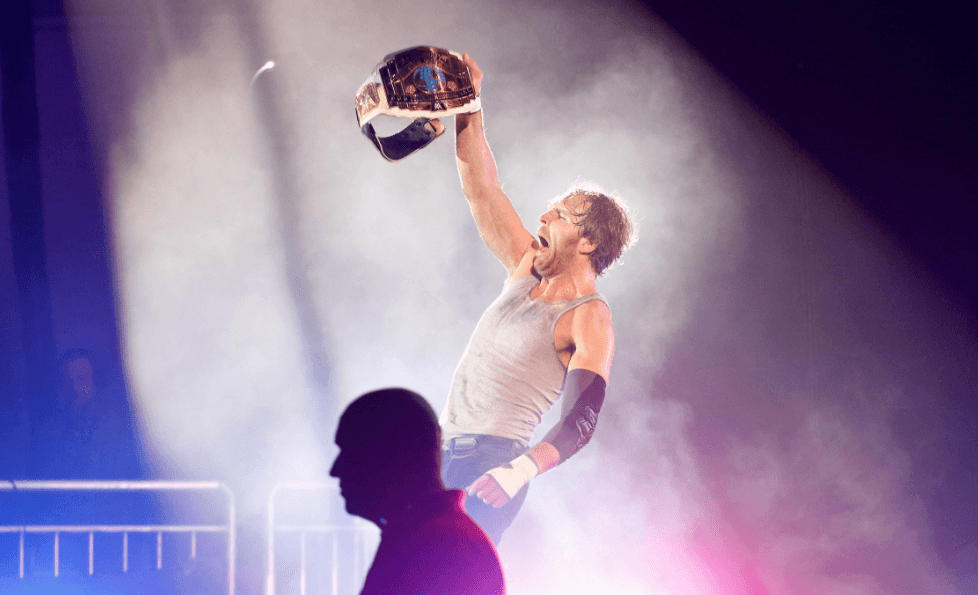
Getty Images

